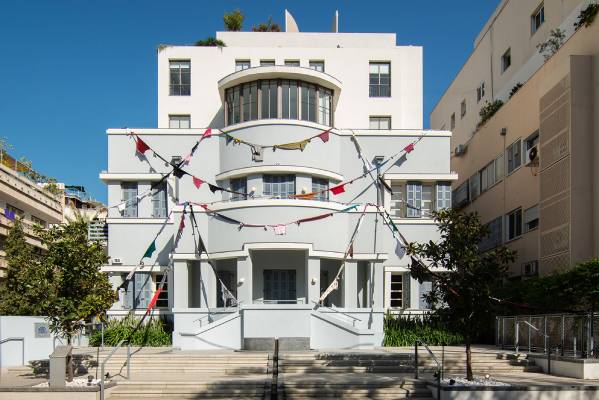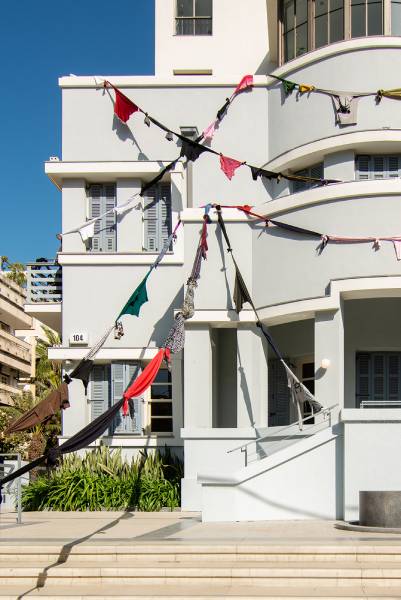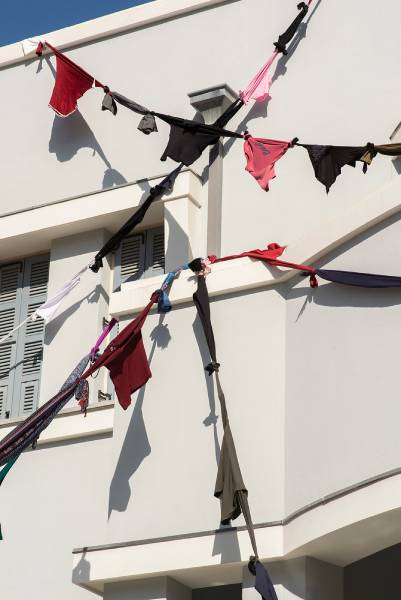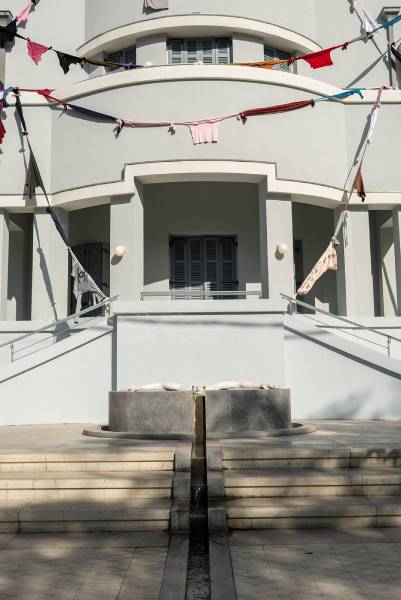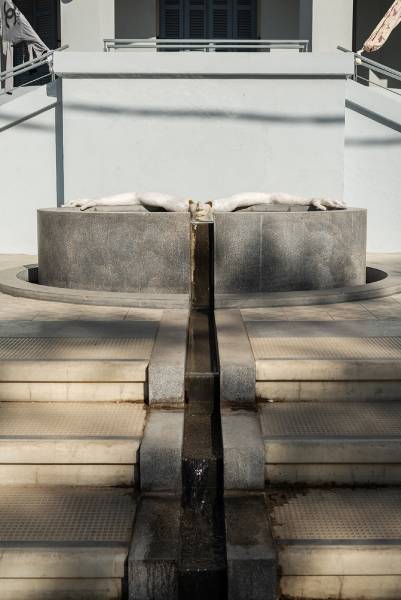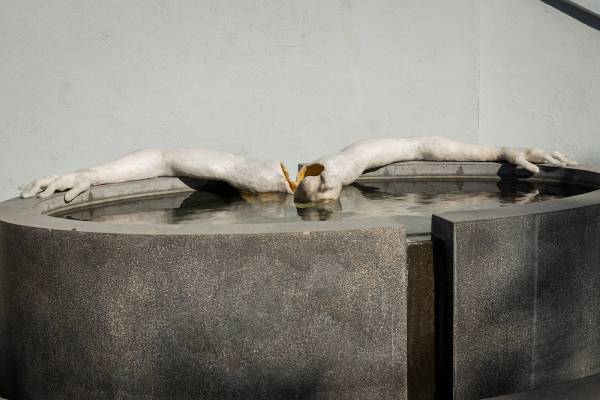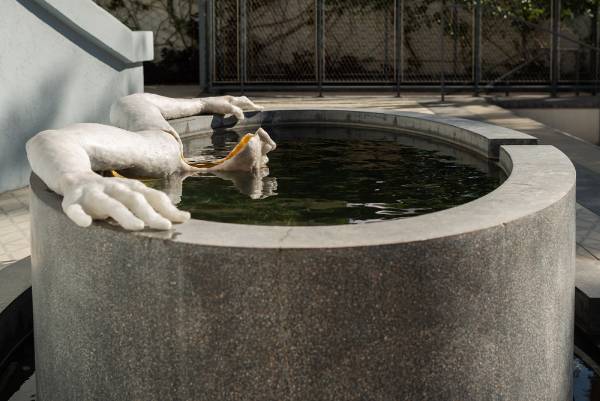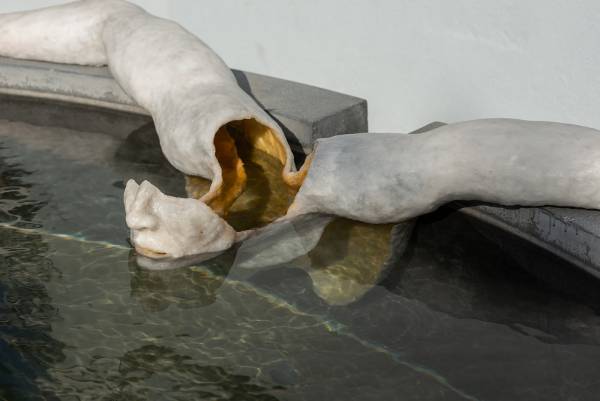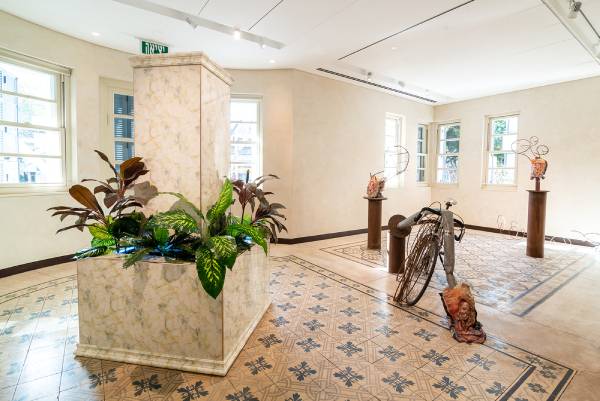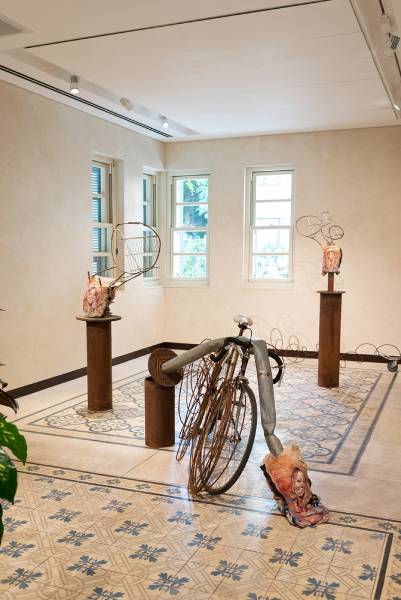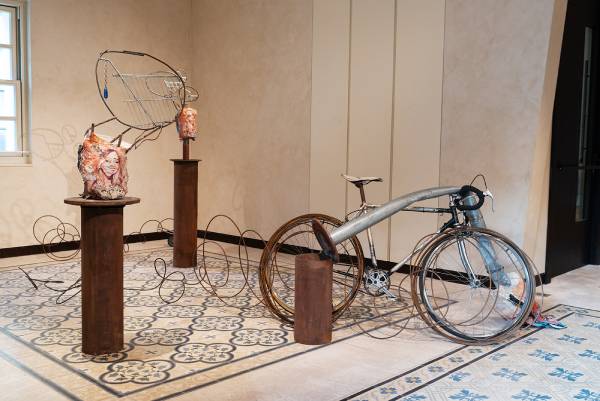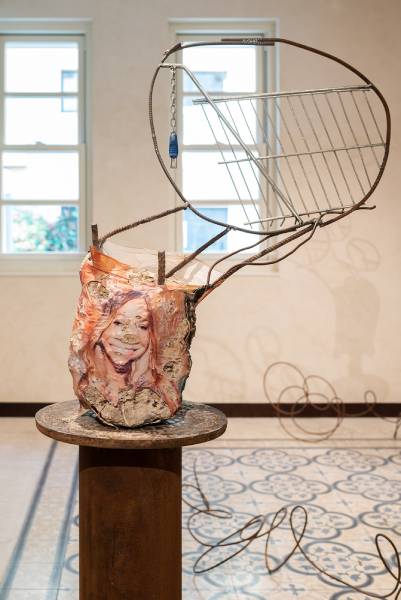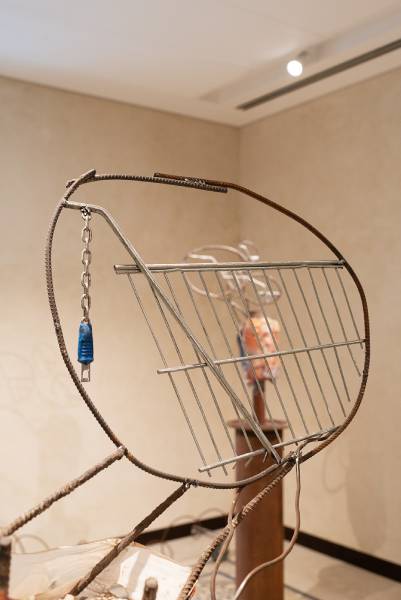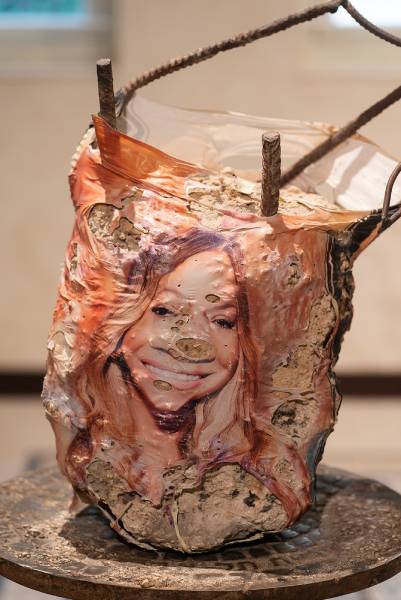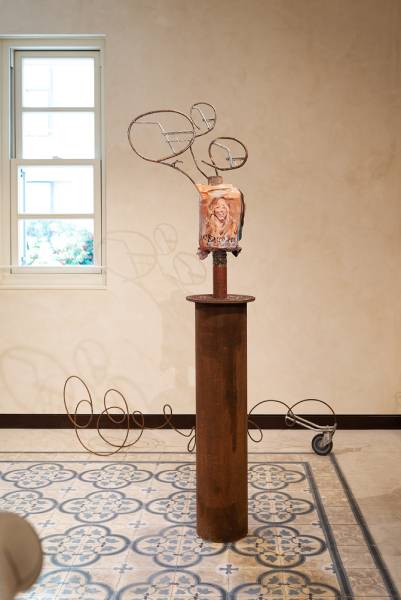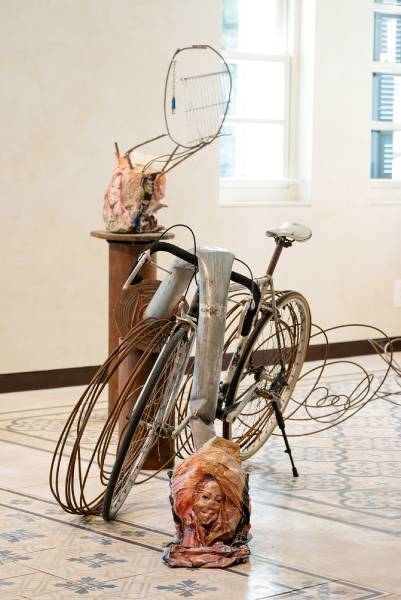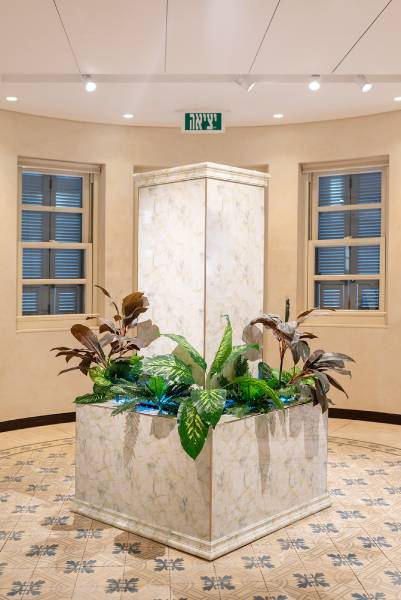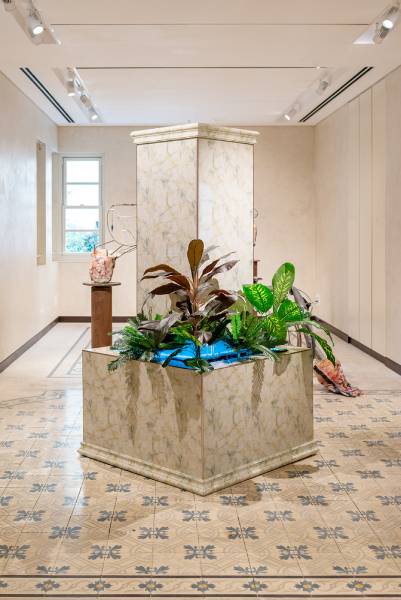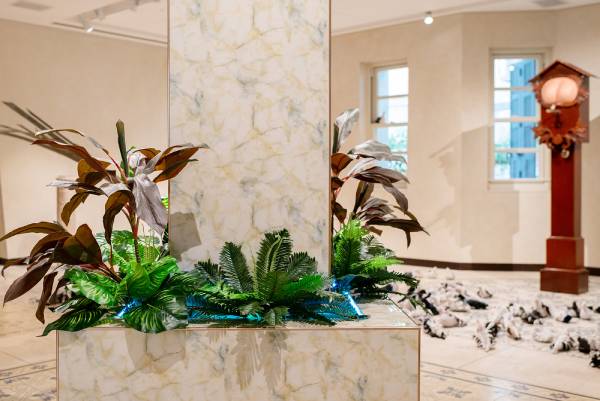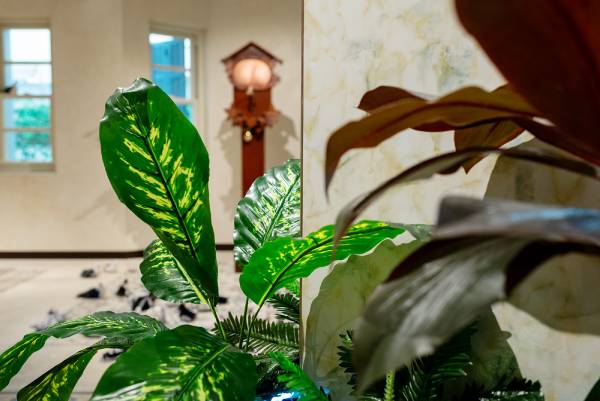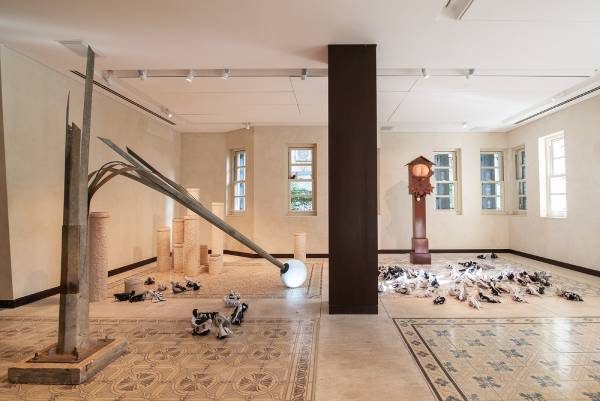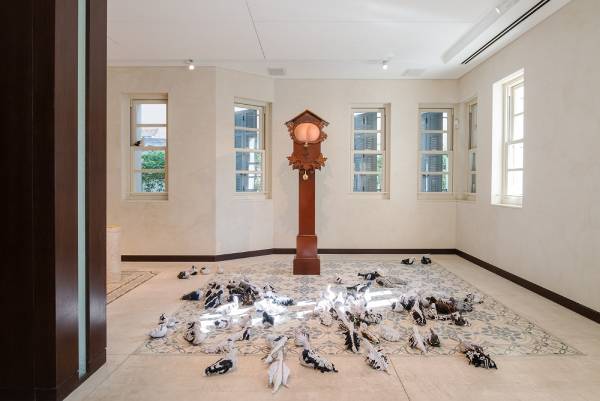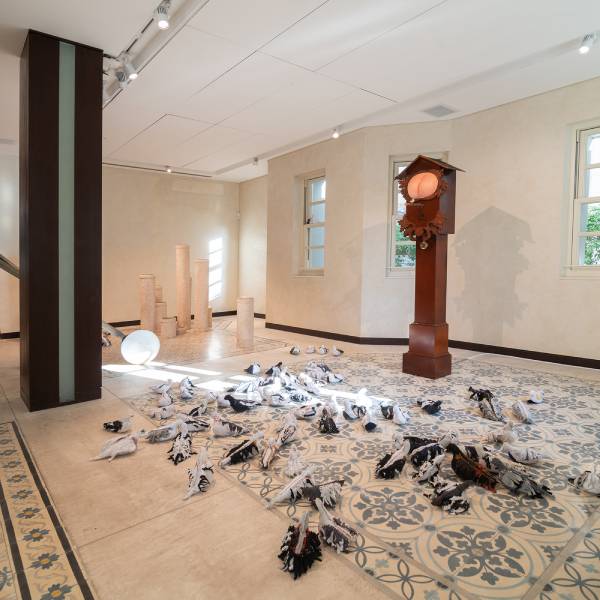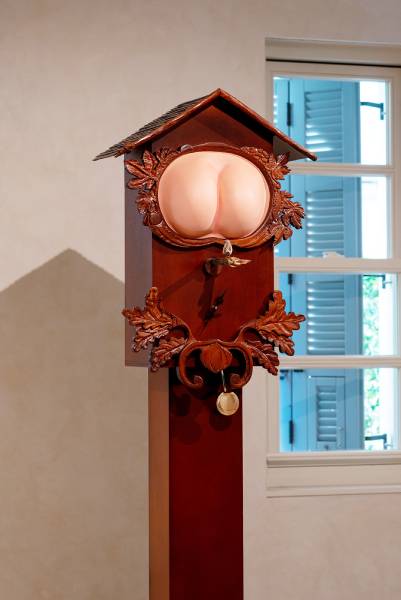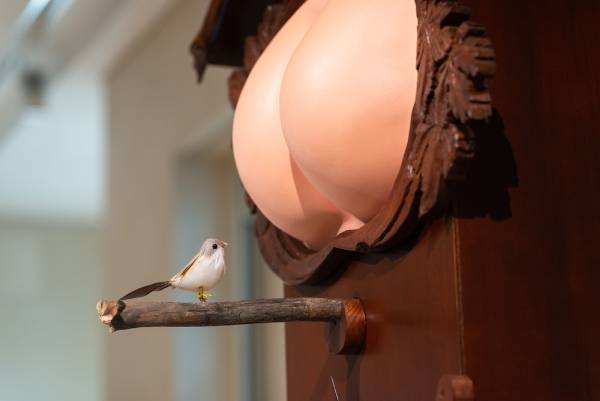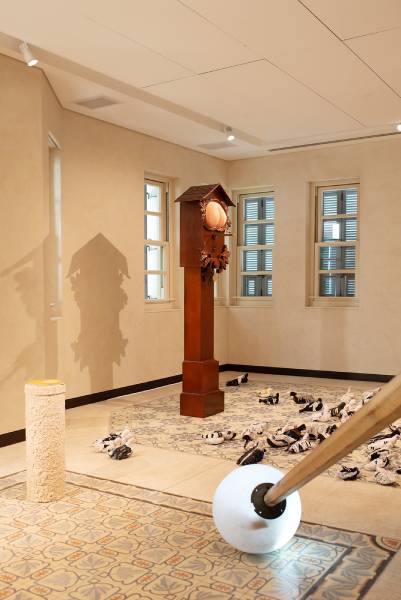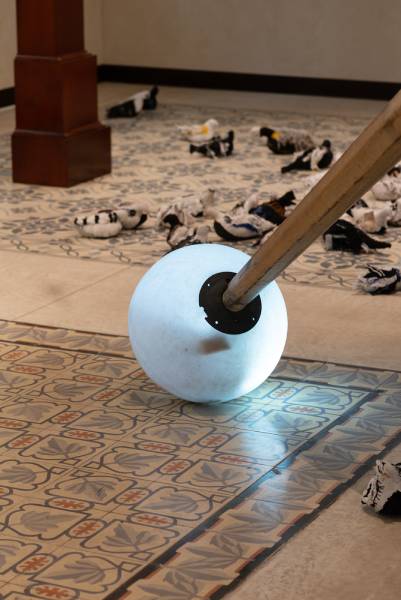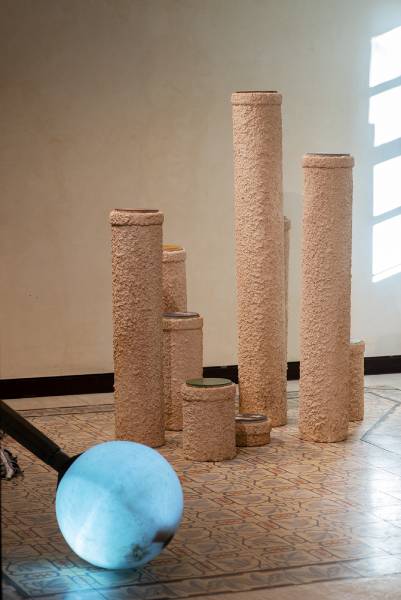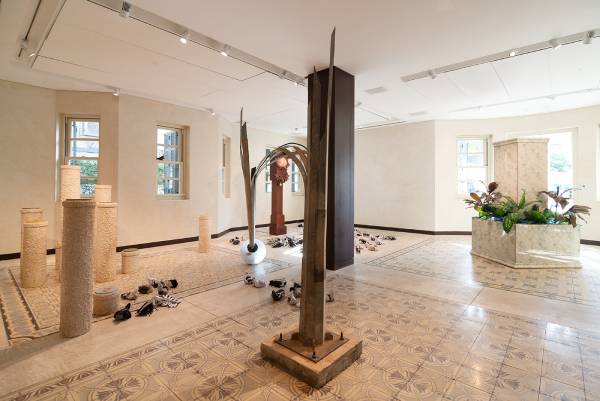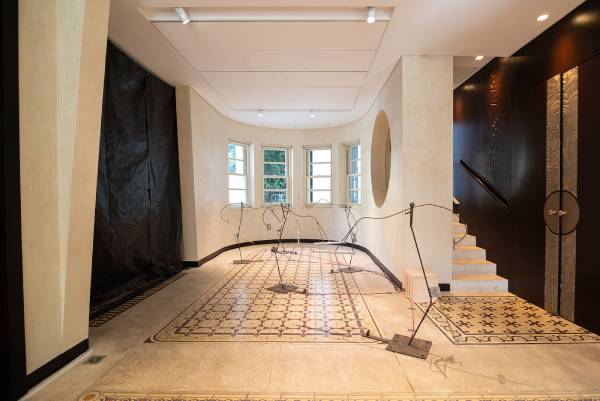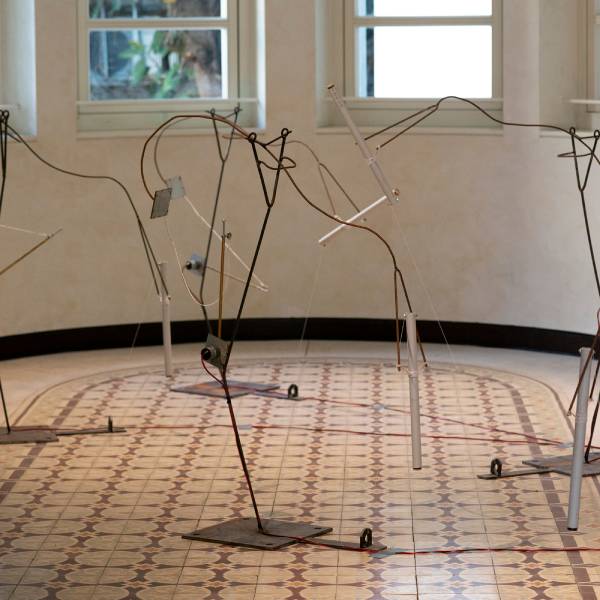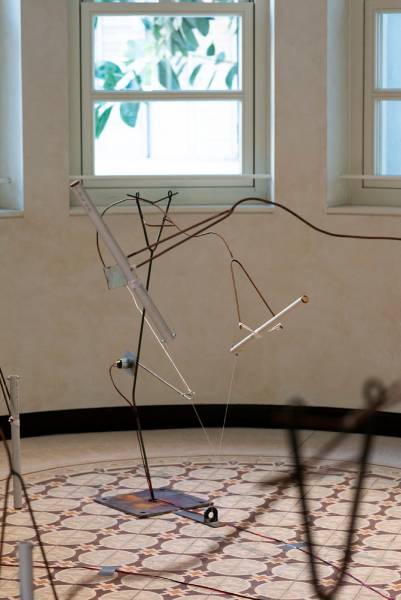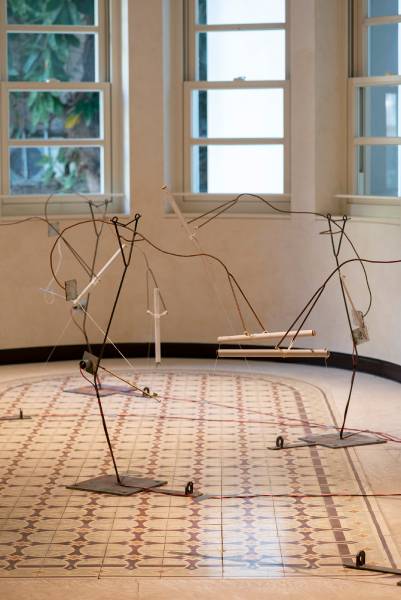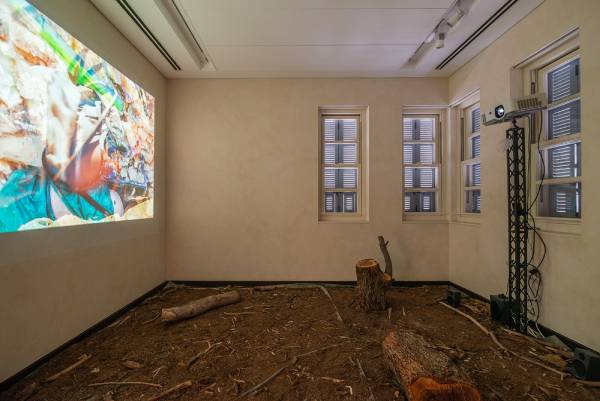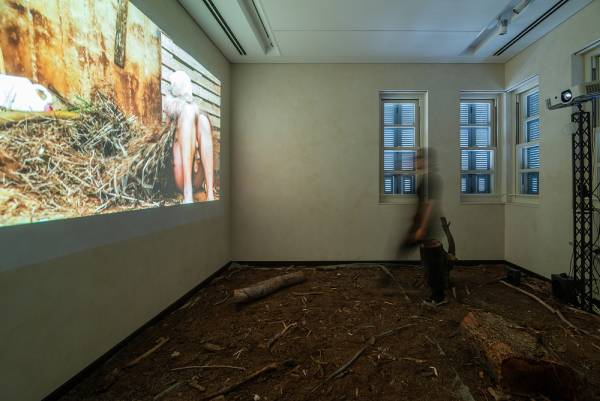Black Rain
Ron Asulin, Noga Farchy, Niv Gafni, Mona Khatib, Michal Luft, Tal
Mezuman, May Zisman & Ofer Romano
2021 April - May
Behind every dystopian fiction stands reality.
Dystopia as an artistic genre lays out a gloomy prospect for the human race. An imaginary future is interlaced with facts from the familiar past and present. In a reality of oppression, scarcity and disease, under a totalitarian regime and/or in the post-apocalyptic aftermath of a disaster, the dystopian artwork calls attention to what it considers to be the flaws and wrongs of the present. It warns of sociocultural disintegration, raises consciousnesses and calls for change.
The artists exhibiting in Black Rain operate in a reality whose outline forms the matrix on which dark dystopian scenarios crop up and grow.
The threat of climate change, the neoliberal capitalist economy, the dizzying pace of scientific and technological advancements, the growing social and economic inequalities, the restrictions on individual freedom together with a general state of anxiety and uncertainty — all find an expression in the works on display.
In his article ‘What Provides Science Fiction with its Critical Power? Three Levels of Voluntary Exclusion’[1], Jonathan Liraz considers how science fiction uses stratagems of estrangement, of which he identifies three main forms: basic estrangement (of the fictional work in relation to concrete reality), cognitive estrangement (the structural characteristics of the genre) and estrangement through subversion (the literary genre is perceived as inferior and thus allows for deviations from conventions).
Adopting similar practices to those of science fiction writers, the artists propose different forms of fiction that use distanciation from reality to better reveal the forces of disruption swarming around them, as well as to better evade them.
Seven works are displayed both within and outside the Edmond de Rothschild Center. In some of them, the relationship between form and matter can be interpreted as echoing events of collapse, distortion and destruction.
Others, more concrete works offer allegory-like representations of the post-apocalyptic situations that follow disasters and devastation.
As if they were small islands in a futuristic Ocean, each work exposes in its own way a dystopian rhetoric that foretells extreme chaotic situations, occurrences of degeneration and downfall.
The exhibition features artists who have graduated in the last five years from the following art institutions: Bezalel, Jerusalem Academy of Arts and Design | Shenkar - Engineering. Design. Art. | HaMidrasha, the Faculty of Arts at Beit Berl College | Musrara, the Naggar School of Art and Education | The Faculty of Arts, University of Haifa
Tal Mezuman, Pit Intrinsic, video installation, one-channel video with sound, 9:00 minutes, 2021
Loneliness, despair and loss of humanity are rampant in Tal Mezuman’s video installation Pit Intrinsic, which examines man’s power relations with nature and with himself, within a space overflowing with violence and self-destruction.
Three characters on the brink of insanity are stranded in an extreme situation reminiscent of a post-apocalyptic reality. In an endless loop of ecstatic actions verging on catatonia, they fight for their lives in vain.
Remains of a civilization yet to be entirely wiped out are left in the primitive space like silent testimonies of a long-gone past.
The characters must contend with a state of emergency in the face of which nature remains strong and stable, indifferent to their plight. This elegy to mankind demonstrates not just humanity’s destructive potential but also the central role it plays in its own destruction.
May Zisman and Ofer Romano, Nurit Forever, mixed media, varying dimensions, 2021
In the collaborative installation Nurit Forever, the artist duo Mai Zisman and Ofer Romano dismantle the boundaries of time and the concreteness of places. They fabricate a theatrical environment resembling a defective, chaotic and quasi-absurd city square.
Zisman and Romano appropriate distinct expressions of urbanity — such as a street lamp, a clock tower, a flock of pigeons, and more — and apply both material and theoretical transformations to convert these elements into seductive, grotesque and heart-rending hybrids.
The defamiliarization of mundane and common elements charges the space to the brink of explosion and heightens the potential for radicalism inherent to such spaces: the city square seems to stand on the verge of a climatic event.
In a carnivalesque atmosphere packed with humor, Zisman and Romano convert the performative act of troubadours into an artistic act, thus undermining the mainstream and subverting established conventions.
Noga Farchy, Hydrophile, soft wax and metal mesh, 45X79X50 cm, 2021
Noga Farchy’s sculptural work presents a minor and self-effacing moment, so quiet as to be almost unnoticeable: a fragmented body is curled up inside the water basin at the entrance of the Edmond de Rothschild Center.
The long-standing sculptural tradition of monumental fountains that celebrate the human body in all its glory is here reinterpreted by Farchy and reduced to an intimate bathing routine. Dedication to pleasure and release is exposed to the public eye.
Yet this seemingly delightful moment turns sour as one begins to identify the resting human shape as a truncated body shedding its skin, or a positive material cast of what was once living and breathing matter. The basin’s water that surrounds and flows through the creature’s lips becomes body fluid. It is left lying there in an endless cycle of filling and emptying, downfall and elevation.
Niv Gafni, Fauna, mixed media, varying dimensions, 2019
Niv Gafni's sculptural installation Fauna is made of industrial materials fused together to create lively autonomous mechanical units that seem to perform together as part of a cacophonous kinetic show, intermittently switching on and off.
Both awkward and fragile, the movement of these low-tech machines inspires sympathy and empathy. The way they move as a flock raises the thought that they might be acting as a kind of nostalgic substitute for an extinct world — a gloomy yet realistic scenario that has already come true for hundreds of natural organisms.
The simple mechanism of these metal skeletons, their voices and resemblance to living creatures strengthen the recognition that after our extinction, the world will return to its starting point. Advanced technologies, science and human knowledge will disappear from the world as if they had never existed, and only primitive forms of existence will survive.
Ron Asulin, Dimui-Gouche, mixed media, varying dimensions , 2021
Plastic bags from a local cosmetic company imprinted with a portrait of Mariah Carey stand at the center of Ron Asulin's installation. The face of the singer who is also the cosmetic company's spokesmodel stretches and contorts on bags crammed to the brim with building debris. Speech bubbles welded from parts of supermarket carts and pieces of metal protrude from the bags, making the latter look like talking heads.
Through a correspondence that winks at the sculptural tradition of local modernism, Asulin creates a jam-packed environment that dissolves the boundaries between interior and exterior, abject and sublime, masculine and feminine.
By shattering any appearance of order, he lays out a new aesthetic of degeneration and exposes the vulgarity of consumer culture. As the cloak of “good order” is torn away, repressed wastes are allowed to storm the stage.
Mona Khatib, Synapses, clothes, 400 m., 2021
A long clothesline made of dozens of garments adorns the facade of the Edmond de Rothschild Center. The rope tightly clasps the building, wrapping itself around its architectural elements and embracing its curves.
Synapses evokes familiar ornamental items such as necklaces and pennants. Yet the cheerful decorative spirit that characterizes celebrations and events is absent from Khatib's installation: her hovering chain is dull and worn out by the passage of time.
The chain is composed entirely of women's clothes. Khatib started it with her own clothes, to which she added the clothes of many more women from her village who either became sick or died from the COVID-19 pandemic. The clothes are tied together without the use of any auxiliary material, binding together issues of immigration, segregation and women's social status in the Arab sector.
The hovering chain does not celebrate any particular joy or holiday. It is a silent tribute to lives that have come to an end.
Michal Luft, Untitled III, wood, faux marble panels, artificial plants, sound, lighting, varying dimensions, 2021
Michal Luft's installation Untitled III draws its inspiration from public spaces that strive to convey luxury, elegance and refinement. Many times, the items heaped up in such spaces are inexpensive imitations seeking to deliver an appearance of abundance. Luft appropriates the stylistic cues of such spaces, mimics their cheap materiality and reconstructs their range of sensory effects.
Through her ‘imitation of the imitation’, Luft creates a 'Total Look' object that functions both as a mesmerizing audio-visual show and a warning signal of cultural collapse. The promise of happiness through wealth fails to materialize, uncovering the seductive vulgarity and other tactics at work behind the blinding force of capitalism. Emptiness seeps into the space and fills its visitors with feelings of confusion and dreariness.
Sound: Yuval Goren
Installation: Amit Aviv
[1] Jonathan Liraz, “What Provides Science Fiction with its Critical Power? Three Levels of Voluntary Exclusion”, Bezalel Journal of Visual and Material Culture, no. 29 - Quiet Please! On Silence and Acts of Silencing

